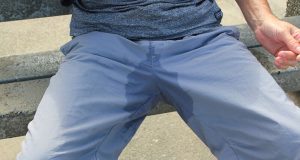By Dr. Virginia Nsitem
Pride Health Columnist
Have you been diagnosed with arthritis in the spine? This article will discuss the various forms of arthritis in the spine and treatment options.
Anatomy of the spine
The spine is divided into three major parts – the cervical spine (neck), the thoracic spine (mid back), and the lumbar spine (low back). The bones of the spine are called vertebrae and they are separated by discs. The joints of the vertebrae attach to one another. The discs in the spine act as shock absorbers and help with mobility. The powerful muscles in the spine provide support and balance.
Spinal Disc Arthritis – Degenerative Disc Disease
Wear and tear on the discs is common, especially as we age. As we age, the discs (that are about 80% water) begin to dry out. The discs can become injured from work, sports, or daily activities. It is important to remember that having degenerative discs does not mean that you will have pain. Pain comes if there is swelling and poor stability around the damaged discs.
Pain and symptoms from damaged discs is called degenerative disc disease (DDD). Common symptoms include:
- Pain that is worse with sitting, bending, lifting, and twisting
- Pain that comes and goes
- Neck pain that extends to the arms (if the degeneration is in the neck)
- Back pain that extends to the buttocks and legs (if the degeneration is in the back)
- Numbness and tingling or other signs of nerve involvement
- Pain improves with movement
Spinal Joint Arthritis – Degenerative Joint Disease
Wear and tear on the joints and cartilage of the vertebrae is another form of arthritis in the spine. The joints in the spine help with bending, twisting, and turning movements. As the cartilage in the joints wears down, the bones grind against each other causing inflammation and pain. In addition, the bones begin to form bone spurs as a result of the damage to the joint. The bone spurs can press on spinal nerves and cause additional pain. Common symptoms of degenerative joint disease (DJD) include:
- Pain, stiffness, and throbbing
- Difficulty with moving the spine
- Crackling noises in the spine with movement
- Numbness and tingling and other signs of nerve involvement
Treatment for degenerative disease in the spine
The first step to treatment is getting a proper diagnosis from your chiropractor or family physician. You may be asked to have x-rays of your spine to provide further information on the extent of the degeneration in the spine. If you have signs of nerve involvement, you may be referred to a specialist to rule out other conditions. Your condition is often co-managed with your chiropractor and family physician. Conservative therapy for degenerative disc and degenerative joint diseases involves chiropractic treatments, physical therapy, Laser therapy, soft tissue therapy and massage, and specific stretching and strengthening exercises. Water therapy (in a pool) may also be helpful.
Dr. Virginia Nsitem is a chiropractor specializing in laser therapy for muscle, joint, and nerve injuries, and she is a Fellow of the Royal College of Chiropractic Sports Sciences in Canada. She may be reached at (905) 275-4993, or by email at totalhealth@bellnet.ca.
 Pride News Canada's Leader In African Canadian & Caribbean News, Views & Lifestyle
Pride News Canada's Leader In African Canadian & Caribbean News, Views & Lifestyle





